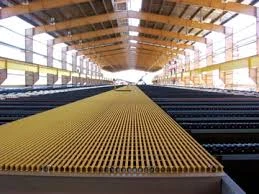
-
 Afrikaans
Afrikaans -
 Albanian
Albanian -
 Amharic
Amharic -
 Arabic
Arabic -
 Armenian
Armenian -
 Azerbaijani
Azerbaijani -
 Basque
Basque -
 Belarusian
Belarusian -
 Bengali
Bengali -
 Bosnian
Bosnian -
 Bulgarian
Bulgarian -
 Catalan
Catalan -
 Cebuano
Cebuano -
 China
China -
 China (Taiwan)
China (Taiwan) -
 Corsican
Corsican -
 Croatian
Croatian -
 Czech
Czech -
 Danish
Danish -
 Dutch
Dutch -
 English
English -
 Esperanto
Esperanto -
 Estonian
Estonian -
 Finnish
Finnish -
 French
French -
 Frisian
Frisian -
 Galician
Galician -
 Georgian
Georgian -
 German
German -
 Greek
Greek -
 Gujarati
Gujarati -
 Haitian Creole
Haitian Creole -
 hausa
hausa -
 hawaiian
hawaiian -
 Hebrew
Hebrew -
 Hindi
Hindi -
 Miao
Miao -
 Hungarian
Hungarian -
 Icelandic
Icelandic -
 igbo
igbo -
 Indonesian
Indonesian -
 irish
irish -
 Italian
Italian -
 Japanese
Japanese -
 Javanese
Javanese -
 Kannada
Kannada -
 kazakh
kazakh -
 Khmer
Khmer -
 Rwandese
Rwandese -
 Korean
Korean -
 Kurdish
Kurdish -
 Kyrgyz
Kyrgyz -
 Lao
Lao -
 Latin
Latin -
 Latvian
Latvian -
 Lithuanian
Lithuanian -
 Luxembourgish
Luxembourgish -
 Macedonian
Macedonian -
 Malgashi
Malgashi -
 Malay
Malay -
 Malayalam
Malayalam -
 Maltese
Maltese -
 Maori
Maori -
 Marathi
Marathi -
 Mongolian
Mongolian -
 Myanmar
Myanmar -
 Nepali
Nepali -
 Norwegian
Norwegian -
 Norwegian
Norwegian -
 Occitan
Occitan -
 Pashto
Pashto -
 Persian
Persian -
 Polish
Polish -
 Portuguese
Portuguese -
 Punjabi
Punjabi -
 Romanian
Romanian -
 Russian
Russian -
 Samoan
Samoan -
 Scottish Gaelic
Scottish Gaelic -
 Serbian
Serbian -
 Sesotho
Sesotho -
 Shona
Shona -
 Sindhi
Sindhi -
 Sinhala
Sinhala -
 Slovak
Slovak -
 Slovenian
Slovenian -
 Somali
Somali -
 Spanish
Spanish -
 Sundanese
Sundanese -
 Swahili
Swahili -
 Swedish
Swedish -
 Tagalog
Tagalog -
 Tajik
Tajik -
 Tamil
Tamil -
 Tatar
Tatar -
 Telugu
Telugu -
 Thai
Thai -
 Turkish
Turkish -
 Turkmen
Turkmen -
 Ukrainian
Ukrainian -
 Urdu
Urdu -
 Uighur
Uighur -
 Uzbek
Uzbek -
 Vietnamese
Vietnamese -
 Welsh
Welsh -
 Bantu
Bantu -
 Yiddish
Yiddish -
 Yoruba
Yoruba -
 Zulu
Zulu
frp materials for heat and nuclear power applications
FRP Materials for Heat and Nuclear Power Applications
Fiber Reinforced Polymer (FRP) materials have emerged as a significant innovation in the fields of heat and nuclear power applications. These composite materials, made from a polymer matrix reinforced with fibers (typically glass, carbon, or aramid), offer enhanced mechanical properties, corrosion resistance, and lightweight characteristics, making them particularly suitable for demanding environments.
One of the most critical advantages of FRP materials is their exceptional resistance to corrosion. In power generation facilities, whether thermal or nuclear, equipment is often exposed to harsh chemicals and high temperatures. Traditional materials like steel can corrode over time, leading to structural failures and increased maintenance costs. In contrast, FRP's inherent chemical resistance allows it to perform effectively in these challenging conditions, significantly extending the service life of components such as pipes, tanks, and structural supports.
In addition to corrosion resistance, FRP materials boast high strength-to-weight ratios. This characteristic is particularly advantageous in nuclear power plants, where structural integrity is paramount but weight restrictions can pose challenges during construction and maintenance. Lightweight FRP components can facilitate easier handling and installation, reducing the physical strain on workers and equipment, and enabling more efficient construction timelines.
frp materials for heat and nuclear power applications

Thermal conductivity is another factor that makes FRP materials suitable for heat applications. While FRP itself is an insulator, it can be engineered to optimize thermal management in various systems. For instance, in heat exchangers, tailored FRP designs can improve efficiency by effectively managing heat flow and enhancing overall performance.
Moreover, FRP materials offer excellent design flexibility. Engineers can create complex shapes and structures with ease, which is particularly beneficial in custom applications within nuclear facilities. The capability to design intricate geometries allows for innovations that traditional materials may not support, potentially leading to improved performance and safety.
In conclusion, FRP materials represent a transformative advancement in heat and nuclear power applications. Their strength, lightweight nature, corrosion resistance, and design flexibility position them as a viable alternative to conventional materials. As the energy sector continues to evolve, the adoption of FRP technology is likely to grow, fostering safer, more efficient, and sustainable power generation solutions. The potential for FRP in these industries not only promises improved operational performance but also aligns with the global push towards more resilient energy infrastructures.
Latest news
-
Exploring the Benefits of Top Hammer Drifter Rods for Enhanced Drilling PerformanceNewsJun.10,2025
-
High-Precision Fiberglass Winding Machine for GRP/FRP Pipe Production – Reliable & Efficient SolutionsNewsJun.10,2025
-
FRP Pipes & Fittings for Shipbuilding - Corrosion-Resistant & LightweightNewsJun.09,2025
-
Premium FRP Flooring Solutions Durable & Slip-ResistantNewsJun.09,2025
-
Premium Fiberglass Rectangular Tanks Durable & Lightweight SolutionNewsJun.09,2025
-
Tapered Drill String Design Guide Durable Performance & UsesNewsJun.09,2025









